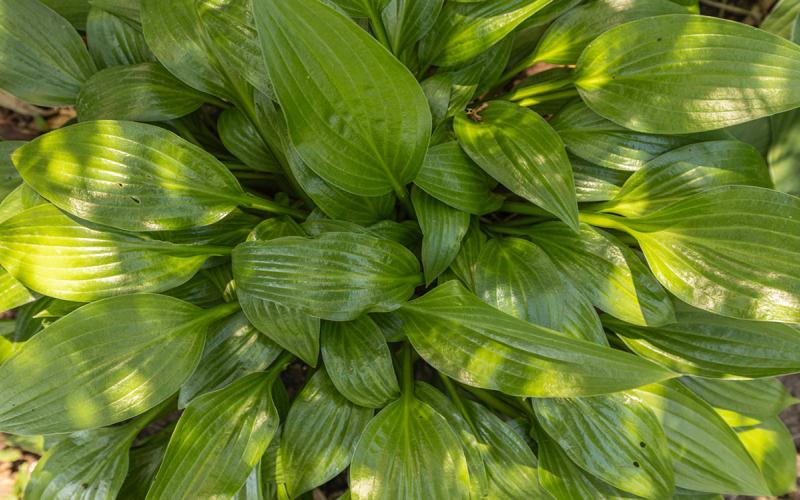Original article by David Graper, former SDSU Extension Horticulture Specialist and Master Gardener Program Coordinator. Updated by Vaughn Reints, SDSU Extension Horticulture Assistant; and Kristine Lang, Assistant Professor, Agronomy, Horticulture, and Plant Science. Special thanks to SDSU Extension Master Gardener Trainee, Max Peterson, for editorial review of this article.

Lungwort, or Pulmonaria, is a great plant for the partly sunny or shade garden. It offers multiple seasons of interest, starting with lovely white or lavender, to purple flowers in early Spring, followed by the development of new, basal leaves decorated with white spots and blotches. Some cultivars have so many spots that the green is hidden and, in some, the whole leaf has a silvery appearance.
Lungworts get their common name from the appearance of the leaves, which are lung-shaped and covered in spots, like a diseased lung. Early medicinal practices often looked for plants in nature that resembled parts of the human body, so this plant was used to treat diseases of the lung. The botanical name Pulmonaria is also Latin for lung. Pulmonaria, however, is no longer prescribed for lung conditions in contemporary medicine. Other common names for this plant include spotted dog, soldiers and sailors, and Joseph and Mary. The spotted dog name refers to the spotted foliage. The names soldiers and sailors and Joseph and Mary might have originated from multi-color symbolism being common in plants that have a sequence of bloom colors. These names were part of traditional English and European plant lore, where visual or symbolic cues in plants were often linked with historical figures or occupational references, making them easier to remember and pass down through generations.
Varieties

Pulmonaria saccharata and P. longifolia remain among the primary species recommended for garden use, particularly in shade gardens, because of their resilience and attractive foliage. However, many modern lungwort cultivars are hybrids involving these species, as well as P. angustifolia. These hybrids often combine desirable traits like improved disease resistance, more-vivid flower colors, and diverse foliage patterns.
Popular cultivars, such as Blue Ensign, Raspberry Splash, and Trevi Fountain showcase the versatility of these hybrids. New cultivars, which offer enhanced aesthetic appeal through distinctive features, like cobalt-blue flowers or silver-speckled leaves, are often favored by savvy gardeners and landscapers. Gardeners are increasingly drawn to these hybrids, because they retain the hardiness and low maintenance of the parent species, while adding unique decorative elements. It’s important, however, to select plants suited to a garden’s climate zone and growing conditions to ensure they thrive and remain low maintenance.
Lungwort pairs well with other shade-loving plants, because they are slow to spread, will tolerate periods of dry weather, and are quite hardy. The early Spring flowers are a welcome treat, too. The foliage of Lungwort may survive Winter, but is nevertheless replaced by the new flower stems, followed by the new rosette of foliage that grows at the base of the plant.
Planting and Care

Even though Lungwort is often available at area garden-centers in Spring, the best selection is often available online or through specialty catalogs. Lungwort is also easy to propagate by division, much like Hosta, albeit on a smaller scale. Established Lungwort, typically five years or older, can be divided without harming the main plant. Before dividing, examine the plant by gently feeling the base. Look for any offshoots or smaller plants growing slightly away from the main clump. Those offshoots and smaller plants make good candidates for division. Use a sharp trowel to dig between the side plant and the parent plant, cutting the roots and crown. Then dig around the division to loosen the soil and roots around the plant and lift the plant, with soil still around the roots. Dig an appropriate-sized hole to accept the new plant, refill and firm the soil around the plant, and finish by watering thoroughly. Fill in any gaps next to the parent plant with additional soil to ensure stability, and to promote healthy root-development. Division is often done in Spring, though early Fall can also be ideal for helping plants become established before Winter. Keep the new transplant watered so that it becomes well-established before the ground freezes.


